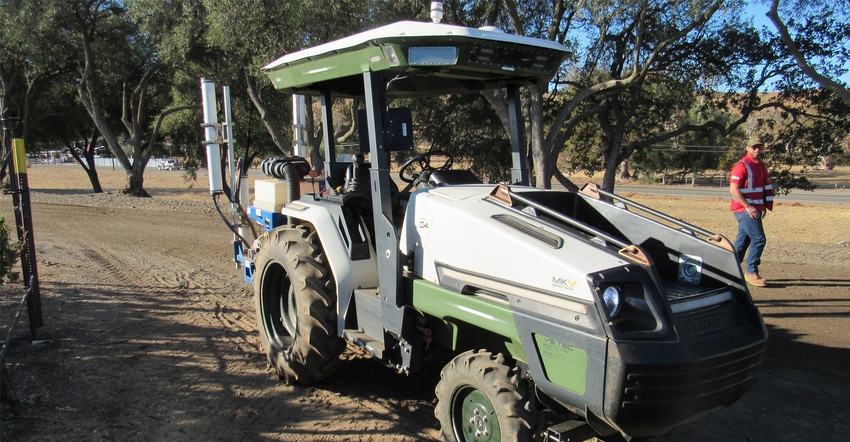November 23, 2021

There are some major trends influencing agricultural technology for the future, and while there's a lot of attention on autonomy, David Meyers says there's another megatrend to watch. "The other megatrend that is coming is electrification," says the CEO of startup Gridtractor. "There are many reasons, including policy imperatives and the compelling economics."
He notes the rising interest in the electrification of passenger cars, but there's growing attention to electrification of commercial vehicles, too, including trucks and buses.
While Gridtractor's work is mainly in California, a state that's working hard to reduce emissions from any vehicle at work on- or off-road, Meyers sees opportunity across the country to maximize the potential of electrification in agriculture. Gridtractor is a "stealth startup" that started its work as part of Polaris Energy Services, and that firm retains part ownership. The aim is to work on ways to maximize the electric infrastructure on a farm.
Meyers explains that while there is more attention to electric tractors, that alone won't be enough for electrification to work. "We talked with tractor manufacturers, trucking people and those that make the charging infrastructure," Meyers explains. "Each said the system faces challenges because there are pieces missing. It's a chicken-and-egg thing."
The farmer won't buy the electric tractor because he can't charge it. The solar power equipment maker don't install the systems, but installers don't see business because the farmer doesn't see the benefit. Farmers are not engaged or excited yet, because they don't see a broad enough offering or a complete package they need to look seriously at electrification, Meyers says.
Utilities offered pilot opportunities for vehicle to grid integration and hoped for ag sector participation, but the tractors and other components were not in place to respond quickly enough. "We said, 'You know, something needs to break this logjam, and that's why Gridtractor was created' — to bring these various pieces together so that we can electrify agriculture," Meyers says.
Bringing it all together
Gridtractor is creating a "software as a service" system designed to help users connect the dots to electrify agriculture. There are detractors that question if higher-horsepower machines can be electrified, but Meyers counters that, too.
"People were saying the same things about trucks, and researchers and engineers went in and did a lot of work specifically on routes that trucks drive, and they thought it would work for short-haul only," he says. "But they realized that it can work for long-haul truckers. The tailwinds that we have with battery technologies are becoming better all the time."
He admits there are engineering challenges, but the work of Gridtractor also means the infrastructure can be ready as those electrified machines come online. Today there are electric tractors at work in California.
Related story: Startup launches innovative electric tractor
Meyers explains that Gridtractor can pull everything together. First it can track and monitor your grid power use by linking with all the meters on the farm. In areas where load balancing happens, the price of electricity can rise and fall during the day.
Next, add in a renewable power source like solar, which gives the farm power all day — and excess can be sold on the grid for added income.
Finally roll in those electric tractors, which not only can work on the farm but also have big batteries that can store power for use on the farm, when grid electricity might be higher.
The Gridtractor sample model on the company website show an irrigated farm that uses lower-cost grid power overnight and solar power during the day. In the early evening, when grid power costs can skyrocket, the electric tractors are used as a power source for pumps.
"Nobody really understands this concept of grid integration," Meyers says. "You look at the material from electric tractor makers, and they talk about energy savings — but there's a blind spot."
Maximizing the electric infrastructure brings several opportunities to U.S. farms, but Meyers also sees value in the developing world, where an electric tractor and a small solar array could power several homes that didn't have electricity before.
The main idea is that if agriculture is going to move to electrification, a holistic approach is needed, and Gridtractor has developed the software and systems to help manage that process. You can learn more at gridtractor.com.
About the Author(s)
You May Also Like






